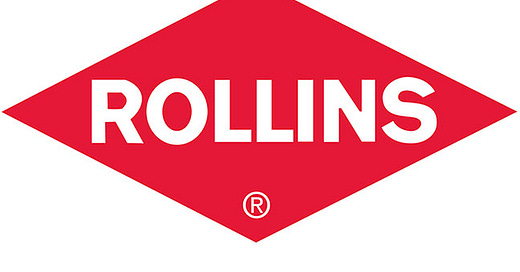Subscribe to AGB - One analysis of a good business every two weeks.
Rollins
“Pest control is a recession-resistant, but not recession-dependent business, representing a nondiscretionary purchase for commercial and most consumers.” – Chief Financial Officer Harry Cynkus on the F14Q3 Earnings Call
Rollins is the largest pest control company in the world with leading market share in the U.S. and Canada. The company operates under a family of brands including Orkin, HomeTeam, Northwest, Critter Control, Clark, Safeguard and others. Rollins started off in other lines of business (car dealerships, TV + radio stations, wallpaper distribution, maid service, etc.) but the core business as we know it today, Orkin, was acquired in 1964. Since then, the company has expanded the Orkin brand to over 400 branch locations globally and acquired many other pest control companies.
Rollins operates company owned pest control locations in the U.S., Canada, England and Australia. The company also franchises in…




